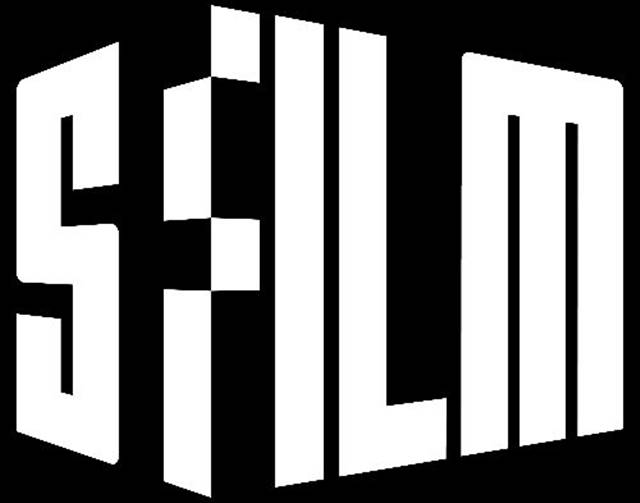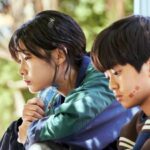
By Jae-Ha Kim
Hollywood Reporter
April 26, 2007
When entrepreneur Irving “Bud” Levin started the San Francisco International Film Festival in 1957, his intention was to compete with the prestigious festivals already thriving in Berlin, Cannes, Edinburgh and Venice and to establish the U.S. as a viable member of the international film-festival circuit.
Today, as its 50th anniversary edition begins (the event runs through May 10), it’s clear that America’s oldest film festival, which features 25 juried awards and is presented by the San Francisco Film Society, has established a venerable presence on the North American circuit — even though it might not necessarily have eclipsed, say, the Sundance Film Festival just yet.
“Ever since our first days 50 years ago, our festival has been intrinsically international in scope, and it’s been important for us to make sure it stays that way,” SFIFF executive director Graham Leggat says. “We’re very fortunate because San Francisco is very cosmopolitan, so that feel fits in well with our city. The themes may have changed throughout the decades, but that sense of a true international festival has always been a constant and something we feel makes the SFIFF quite special.”
Filmmakers eager to showcase their projects agree. Although the SFIFF can only select about 200 films for each year’s fest, organizers annually receive more than 2,000 entries. Those lucky enough to make the cut are grateful for the experience.
“I have such respect and love for this festival,” says Bay Area filmmaker Bonni Cohen, whose “The Rape of Europa” and “Wonders Are Many” are both screening at this year’s event. “To have a film premiere in your hometown at the SFIFF is pretty amazing. And from a practical point of view, the folks at the festival are really diligent about getting the word about your film to as many people as possible. And when you’ve worked seven years on a picture (as Cohen did with ‘Europa’), it really feels great that other people care so much about your film, too.”
Fledgling San Francisco filmmaker Mike Jacobs doesn’t rule out divine intervention playing a part in the acceptance of his film, “Audience of One,” into this year’s festival.
“I had no money when we made this film, so we edited it in this room that was basically a closet,” Jacobs says of “Audience,” which follows a local pastor as he tries to make a movie — equal parts 1956’s “The Ten Commandments” and 1977’s “Star Wars” — that he says God told him to make. “It was all I could afford. But the closet happened to be right next to the San Francisco Film Society. I met everyone involved in the film festival and ingratiated myself to them. I showed Graham an early copy of the film, and he said he loved it. It was one of those strange scenarios that worked out well for me.”
Whether the manner of their acceptance into the festival is serendipitous or not, films admitted into the SFIFF fall into four categories: new directors, world cinema, documentaries and shorts programs. Additionally, three spotlight sections, Cinema by the Bay, KinoTek and the Late Show, focus on local productions, digital media and international horror films, respectively.
This year, the SFIFF will host numerous premieres: three world, two international, 11 North American, five U.S. and 40 West Coast, including Peace Arch Entertainment’s “Delirious” (the festival’s Centerpiece film), starring Steve Buscemi and written and directed by indie filmmaker Tom DiCillo; Sony Pictures Classics’ “Paprika”; and Picturehouse’s “La Vie en Rose,” the event’s closing-night presentation.
An average of 80,000 cinephiles turn up annually for the SFIFF, visiting the event’s 11 venues throughout the city. But unlike some festival organizers who strive to increase their events’ numbers, Leggat says the SFIFF’s future plans don’t include a grand-scale expansion. “Ideally, we’d like to hit 100,000 (attendees) one day, but we really don’t want to get too much bigger than that,” he says. “San Francisco is not a huge city geographically. We don’t want the fest to ever get so big that people can’t walk around and enjoy themselves.”
Instead, Leggat is exploring trends such as digital media and animation and is supporting the public’s interest in documentaries.
“Unlike the ballet or opera, which may rework something from a classical repertory, we have to constantly look for new material that we consider illuminating,” he says. “Except for the retrospective pieces we pick out, all our films are from the past 12 months. We have to reinvent ourselves each year and make sure we are tapping into films from all the burgeoning areas, like Southeast Asia, Eastern Europe, the Middle East and sub-Saharan Africa. We’re always searching and looking for that next great film.”
While the SFIFF is the San Francisco Film Society’s crown jewel, the nonprofit works hard to ensure that the focus on film extends beyond the two-week event. Its year-round efforts are concentrated in four areas: internationalism and cross-cultural exchange; educating and motivating Bay Area youth; showcasing Bay Area film culture; and exploring new digital media.
In addition to putting on the SFIFF, the society spearheads two other festivals: the San Francisco International Animation Festival, held in October, and the New Italian Cinema fest in November. Plans also are in the works for the inaugural San Francisco International Youth Media Festival, slated for early 2008.
But as this year’s SFIFF gets underway, programming director Linda Blackaby reflects on the unique nature of film fans and her role in the festival process.
“Film fans are an unusual breed,” Blackaby says, laughing. “While we may complain sometimes about all the films we have to see, I don’t think there’s any one of us who would rather do anything else. Sometimes, my friends will ask me if I ever get sick of screening movies. I can honestly say that I don’t. It’s fascinating to see what interests a person enough to put so much of his or her life into one project. It sounds like a cliche to call it a labor of love, but we really love what we do. And when you get to discover new talent, it’s really worthwhile.”
***
Eclectic programming keeps things interesting at the SFIFF
As any festival organizer can attest, appealing to a wide range of audience interests is key to a successful event. With a diverse array of films, tributes, parties, panels and performances taking place throughout the City by the Bay, this year’s San Francisco International Film Festival aims to do just that. From tonight’s opening screening of Emanuele Crialese’s Miramax drama “The Golden Door,” which tells the bittersweet tale of Sicilians arriving at Ellis Island at the turn of the last century, to Picturehouse’s “La Vie en Rose,” Olivier Dahan’s closing-night tribute to Edith Piaf, the 50th edition of the SFIFF intends to surprise, provoke, entertain and inspire.
The fest’s packed 15-day schedule includes the screening of 200 films from 54 countries. At the top of the must-see list are three high-profile documentaries: Richard Berge, Bonni Cohen and Nicole Newnham’s thought-provoking “The Rape of Europa,” which explores how Adolf Hitler pillaged valuable pieces of art for his private collection during World War II; Gary Leva’s “Fog City Mavericks,” which takes a look at San Francisco filmmaking luminaries such as Francis Ford Coppola, Philip Kaufman, George Lucas and Robin Williams; and Spike Lee’s HBO feature “When the Levees Broke: A Requiem in Four Acts,” which will screen Wednesday after the director is honored with the SFIFF’s Film Society Directing Award for the movie detailing the U.S. government’s response to Hurricane Katrina.
Other festival honorees include Lucas, who is receiving the one-time-only Irving M. Levin Award, given to a figure who has demonstrated deep appreciation for movies as an art form; Williams, who is being honored with the Peter J. Owens Award, given to actors whose work exemplifies brilliance, independence and integrity; and screenwriter Peter Morgan (2006’s “The Queen” and “The Last King of Scotland”), who is receiving the Kanbar Award for excellence in screenwriting. The honors are set to be handed out May 3.
But first comes Friday’s screening of the 1921 silent-film classic “The Phantom Carriage,” part of the fest’s annual Live & Onstage event, which will be accompanied by Bay Area icon Jonathan Richman’s live score. Saturday’s inaugural Midnight Awards, created to honor a young American actor and actress who have each made contributions to both independent and mainstream Hollywood films, will honor Sam Rockwell and Rosario Dawson.
Notes to a Toon Underground takes place May 5 and features 15 animated films created between 1912 and 2005, with 11 musicians providing live accompaniment. And at the silent “Brand Upon the Brain!” screening May 7, a 13-piece ensemble will perform as actress Joan Chen narrates the film.
“Every year, we feel we have to be everything to everybody,” SFIFF executive director Graham Leggat says with a laugh. “We obviously can’t be everything, but we try to mix things up so that people don’t get bored. And if all else fails, we have a happy hour.”





